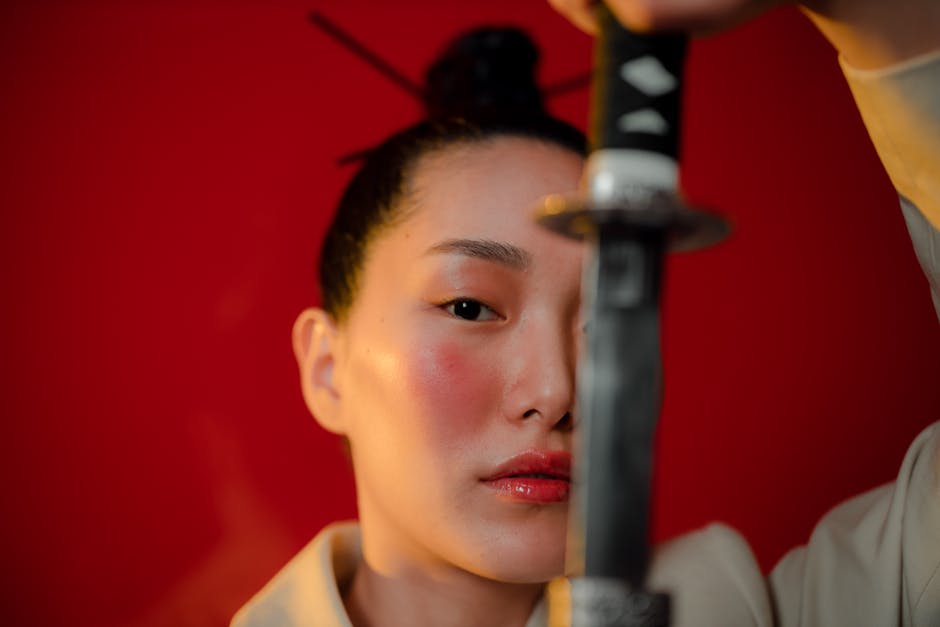Understanding Japanese Swords
Japanese swords, renowned for their craftsmanship and historical significance, encompass various types such as katana, wakizashi, and tanto. These blades are traditionally hand-forged with a unique curved shape and sharp edge, reflecting centuries of Japanese sword-making expertise.
The process of crafting a Japanese sword involves intricate techniques passed down through generations. From selecting the right steel to the meticulous forging and tempering, each step contributes to the blade’s strength, sharpness, and overall quality. This careful craftsmanship results in blades that are not only beautiful but also purposeful in their design.
One of the key features of Japanese swords is the differential hardening known as the hamon. This distinctive line on the blade, created during the tempering process, not only enhances the sword’s aesthetic appeal but also indicates the varying hardness of the edge, crucial for its cutting ability and resilience in combat.
The significance of Japanese swords extends beyond their physical attributes. They are often imbued with symbolism and considered as cultural treasures in Japan. These swords carry with them a rich history and symbolic meaning that adds to their allure and mystique, making them not just weapons but artifacts of profound cultural value.
History of Japanese Swords in Martial Arts
Japanese swords have a long-standing connection with martial arts, particularly in disciplines such as Kenjutsu and Kendo. These traditional swordsmanship practices emphasize discipline, precision, and respect for the sword as a symbol of honor and skill.
Throughout history, samurai warriors wielded Japanese swords like the katana as part of their training and in battle. The art of Iaido, focused on the quick and precise drawing of the sword, highlights the seamless integration of swordsmanship techniques into fluid movements and mind-body coordination.
In modern martial arts, the influence of Japanese sword techniques can still be seen, with practitioners incorporating elements of swordsmanship into their training. While the practicality of using traditional swords in combat situations has evolved, the principles of focus, control, and technique remain integral to the martial arts ethos.
The historical significance of Japanese swords in martial arts serves as a testament to the enduring legacy of these blades. From ancient battlefield strategies to modern training methods, the symbolic value and technical expertise associated with Japanese swords continue to inspire martial artists around the world.
Benefits and Limitations in Modern Martial Arts
Integrating Japanese swords into modern martial arts training offers various benefits, such as enhancing focus, refining technique, and promoting mindfulness. The precision required to wield a sword effectively can help practitioners develop concentration and body awareness, which are valuable skills in any martial discipline.
However, the practicality of using Japanese swords in contemporary combat scenarios is limited by factors such as legal regulations, safety concerns, and the availability of qualified instructors. While the historical and cultural significance of these swords is acknowledged, their use in modern combat sports or self-defense situations may be restricted.
Adapting traditional sword techniques to modern practices involves careful consideration of safety protocols and training methodologies. Blending the principles of Japanese swordsmanship with other martial arts disciplines can result in a well-rounded training approach that honors tradition while acknowledging the practical realities of today’s combat environments.
The limitations of using Japanese swords in modern martial arts are a reflection of the changing nature of combat and self-defense practices. While these swords continue to hold a revered place in martial arts history, their application in contemporary contexts requires a balance between respecting tradition and adapting to the demands of a modern world.
Training and Safety Considerations
When training with Japanese swords, safety should always be a top priority. Proper instruction from experienced practitioners and adherence to safety protocols are essential to prevent accidents and injuries during training sessions. Respect for the sword and fellow practitioners is paramount in maintaining a safe training environment.
Furthermore, understanding the proper handling and care of Japanese swords is crucial to their preservation and longevity. Regular maintenance, such as oiling the blade and storing it correctly, ensures that the sword remains in optimal condition for training and display. Properly maintaining a Japanese sword honors its craftsmanship and history.
Effective training with Japanese swords requires dedication, discipline, and patience. Mastery of sword techniques takes time and consistent practice, emphasizing the importance of regular training sessions under the guidance of qualified instructors. Developing proficiency with a Japanese sword is a journey that demands dedication and continuous learning.
In conclusion, while Japanese swords can be used in modern martial arts, their application requires a balance between tradition and practicality. By understanding the historical significance of these blades, respecting their craftsmanship, and integrating their techniques thoughtfully into training, practitioners can experience the rich legacy of Japanese swordsmanship in a contemporary context.

